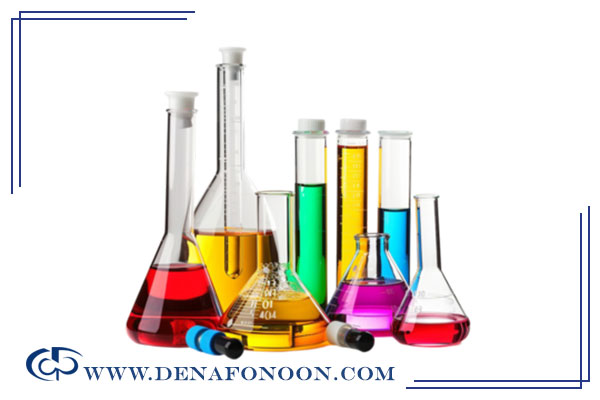Types of flocculation in water treatment
What is a flocculant
VisitCount 14
What is a Flocculant
A flocculant (also known as a poly electrolyte or polyacrylamide) is a chemical substance that accelerates the separation process of solid particles from liquids. It facilitates the treatment of wastewater by promoting the aggregation of suspended solids, leading to clearer water output.
Flocculants work by causing tiny suspended particles to clump together into larger aggregates, called flocs, which can then be easily removed from the liquid by sedimentation, filtration, or flotation methods. This process significantly improves the efficiency of water and wastewater treatment plants.
Applications of Flocculants
Flocculants are widely used in various industries and environmental processes, including:
Wastewater Treatment: To remove suspended solids and contaminants, helping to purify industrial and municipal wastewater before release or reuse.
Drinking Water Treatment: To clarify raw water by aggregating fine particles and microorganisms, making water safe and clear.
Mining Industry: To separate minerals from ores and to manage tailings by thickening slurry materials.
Paper Manufacturing: To improve the removal of fine particles and enhance paper quality.
Food and Beverage Industry: For clarifying liquids and improving filtration processes.
Chemical Processing: To assist in solid-liquid separation processes.
By enhancing sedimentation and filtration, flocculants reduce processing time, lower energy consumption, and improve overall treatment performance.
Detailed Explanation of Flocculants and Flocculation Process
Fine particles with sizes smaller than 0.1 microns often carry an electric charge—usually negative—that causes them to repel each other. Because of this repulsion, these particles remain suspended and dispersed in the slurry without settling naturally.
To enable these fine particles to settle, their electric charges must be neutralized using chemical agents called flocculants. When flocculants are added to wastewater, they induce attractive forces, such as Van der Waals forces, which cause the fine particles to collide and stick together. These clumped particles are called flocs.
The long polymer chains of the flocculants in the liquid phase trap and aggregate the fine particles. This leads to the formation of larger, heavier particles that settle more easily, resulting in clear liquid and a concentrated sludge.
- Increasing the Settling Rate of Fine Particles: Because very small particles (on the micron scale) settle slowly due to their low weight, several methods can be used to accelerate their sedimentation
- Using centrifugal force: This artificially increases the settling velocity by applying a force stronger than gravity.
- Adjusting environmental conditions: Modifying the chemical or physical environment so that fine particles stick to each other through Van der Waals forces.
- Adding flocculants: Polymers that promote particle aggregation, significantly increasing settling speed.
The process of adding flocculant powder to a suspension is called flocculation. Typically, flocculants are mixed with water using specialized equipment, such as a flocculant preparation unit (like those made by companies such as Denafonoon).
The resulting mixture is then introduced into a clarifier tank where sedimentation occurs. After settling, the clear water is separated, and the concentrated sludge proceeds to further filtration processes, often using a filter press.
Applications of Flocculants in Various Industries
Flocculants serve as industrial coagulants and have a wide range of applications across many sectors. Some of the key industries where flocculants are extensively used include:
- Leather Industry: For removing suspended solids and clarifying wastewater generated during leather processing.
- Paper Industry: To improve the retention of fine particles and enhance the quality of paper products.
- Textile and Dyeing Industry: For treatment of dye-laden wastewater, helping to separate colorants and suspended solids.
- Agriculture: In irrigation systems and treatment of agricultural runoff to reduce turbidity.
- Drilling Mud Production: To control the viscosity and solid content of drilling fluids.
- Polymer Manufacturing: As part of polymerization processes and wastewater treatment in polymer plants.
- Sugar Production and Liquid Concentration: To clarify sugar juice and concentrate liquids during processing.
- Separation of Organic Compounds in Refrigeration and Thermal Systems: For removing organic impurities and insoluble oxides.
- Removal of Insoluble Oxides in Water Recycling Systems: Improving water quality by removing metal oxides.
- Clarification of Polluted Water: Enhancing the sedimentation and removal of contaminants.
- Industrial Wastewater Treatment: Particularly in sectors with heavy pollutant loads.
- Wastewater Treatment in Petrochemical Plants: To remove oil, suspended solids, and other contaminants.
- Wastewater Treatment in Stone-cutting and Quarrying Industries: To clarify water contaminated with fine particles.
- Treatment of Wastewater from Sand and Gravel Mines: For sediment control and water recycling.
- Wastewater Treatment in Lead and Zinc Mines: To separate heavy metals and particulate matter.
- Wastewater Treatment in Mosaic Tile Manufacturing Plants: To remove suspended solids and clarify process water.
- Wastewater Treatment in Glass Manufacturing Plants: For removal of fine particles and recycling water.
- Wastewater Treatment in the Automotive Industry: To treat process effluents and maintain environmental standards.
Types of Flocculants
Flocculants are polymer compounds composed of long carbon chains. Based on their origin, flocculants are generally divided into two main categories:
- Organic Flocculants
- Inorganic (Mineral) Flocculants
Due to environmental concerns, organic flocculants are preferred over inorganic ones. Synthetic organic flocculants are further classified based on their charge into three groups
- Anionic Flocculants: (negatively charged)
- Cationic Flocculants: (positively charged)
- Nonionic Flocculants: (neutral charge)
The Three Main Types of Flocculants
Cationic Flocculants
These carry a positive charge and are especially effective in treating wastewater containing negatively charged particles such as clay, organic matter, and some industrial effluents. They help neutralize the negative charges and promote aggregation.
Anionic Flocculants
Negatively charged flocculants typically used for suspensions with positively charged particles. They are widely applied in sludge dewatering and in industries such as mining and pulp and paper.
Nonionic (Neutral) Flocculants
These do not carry any charge and primarily function by bridging particles together rather than neutralizing charges. They are often used in combination with other types or where charge neutralization is less critical.








